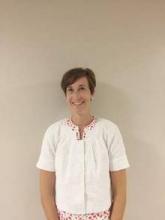A new Web-based community portal, www.MyApnea.Org, is mobilizing the largest community of patients and researchers ever created to work together to identify better ways to screen, treat, and prevent sleep apnea. MyApnea.Org is the public face of the Sleep Apnea Patient-Centered Outcomes Network (SAPCON), one of 18 patient-powered research networks to improve comparative effectiveness research by focusing on patient-centered outcomes. This type of research asks: Of available treatment alternatives, which treatments are most effective and for which patients? The Patient-Centered Outcomes Research Institute (PCORI) (www.pcori.org) has established PCORnet, the National Patient-Centered Clinical Research Network which engages patients, care providers, and health systems in collaborative partnerships to develop platforms to efficiently conduct such fundamental research. Within PCORnet there are Patient-Powered Research Networks (PPRNs), focused on specific health conditions, such as sleep apnea (MyApnea.Org), that combine the complementary knowledge and insights of patients, caregivers, and researchers to help guide research that identifies effective and personalized treatments.
There has never been a more urgent time in sleep medicine for patient and stakeholder participation in such a national comparative effectiveness research initiative. With escalating health-care costs, payers are demanding higher levels of evidence to justify the use of diagnostic tests and treatments and are asking for data that provide value to the patient and health-care system. Many insurers restrict how sleep tests and treatments are delivered; however, those requirements often reflect a generalization of data from studies that were conducted at highly specialized referral centers and were not intended to be used without the support of a full team of committed sleep health professionals.
MyApnea.Org is inviting people with (or at-risk of) sleep apnea to share information, provide support, and to help design, direct, and participate in sleep research. A broad and collaborative effort is what is needed to generate the evidence necessary for deciding which diagnostic studies and treatments are most effective. Studies of large numbers of individuals from across the United States (and the world) are needed to achieve the sample sizes necessary for identifying which patients benefit most (or might be harmed) from specific treatments. Rather than the traditional “one size fits all” approach to medicine and research, MyApnea.Org and PCORnet hopes to use information on health risk factors, biomarkers, background, and type of sleep apnea to tailor treatments that are likely to be most effective for individual patients. In such a way, a patient with a given set of risk factors (based on airway size, body fat distribution, time in REM sleep, etc) would be offered treatments most likely to benefit him or her. Furthermore, research that addresses the outcomes that matter to patients (eg, fatigue in women, behavioral problems in children) will ensure that the results are relevant and would improve the health and well-being of patients with sleep apnea. It is also an exciting time in sleep research as technological advances currently present numerous opportunities for improving sleep apnea diagnosis and management. Examples include telemedicine, newer ambulatory monitoring devices, mHealth devices, and sophisticated oral appliances and pressure devices. However, without good evidence on what works best, such technologies can be misused. MyApnea.Org is building a platform to conduct such large-scale patient-driven comparative effectiveness research.
Patient members of MyApnea.Org have the opportunity to complete a series of health-related surveys, nominate and vote on research questions, and can participate in forums to discuss how patient-centered research should be conducted. After completing the patient reported outcomes surveys, patients are able to see their answers in comparison with the rest of the patient community. In coming months, patients will have the opportunity to connect their wearable devices, and there are future plans to link patient-reported data with electronic medical records. Through these research communities, patients can identify what questions are most important and can co-develop proposals with health-care providers and scientists to address these needs.
Sleep researchers and clinicians are also encouraged to join MyApnea.Org. After becoming a member, providers are prompted to create their own specific landing page with a unique Web address and welcome message for their patients. These personalized Web links enable providers to promote the site among their patient panel, and when patients register for the site using the personalized link, providers and patients are connected within the MyApnea.Org database. Once a provider has at least 20 patients registered for the site, they are able to view the aggregate patient-reported outcomes for their patient panel and compare results against the entire patient community. These data could help many clinicians fulfill their maintenance of certification (MOC) requirements by monitoring patient-generated data to track adherence and other quality metrics. Additionally, sleep researchers have the ability to use the MyApnea.Org patient data in the development of grant proposals and other funding opportunities.




